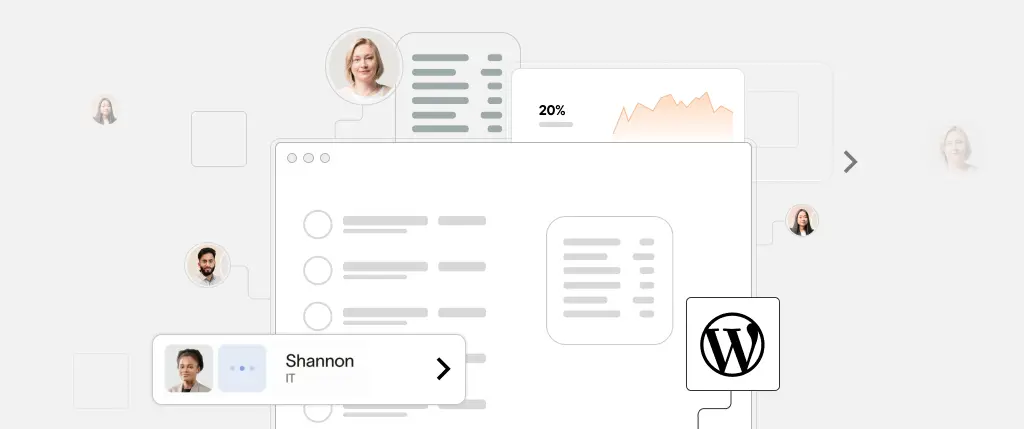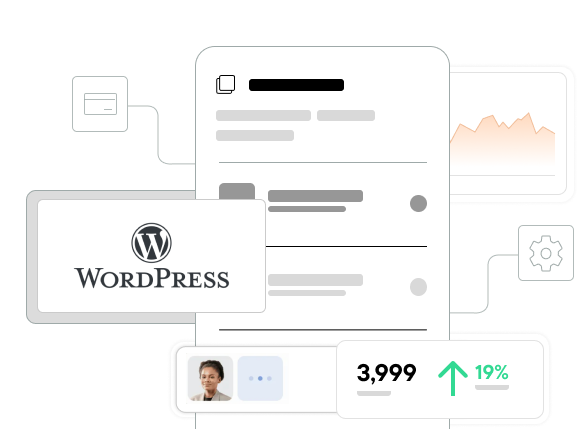For developers, the WordPress admin dashboard is second nature. But for non-technical clients, it can feel cluttered, confusing, and even intimidating. If your client only needs to update blog posts or swap out a homepage image, the full admin interface is overkill — and often a support ticket waiting to happen.
That’s why learning how to customize the WordPress admin for clients is such a powerful tool. A streamlined, intuitive admin experience can reduce errors, minimize client confusion, and give your project a polished, professional edge. In this guide, you’ll discover best practices, code examples, and plugins to simplify WordPress for your clients without sacrificing functionality.
The WordPress admin interface is the backend panel where users manage content, plugins, themes, and site settings. By default, it includes:
- A left-hand menu with items like Posts, Pages, Media, Plugins, etc.
- Dashboard widgets like “At a Glance” and “WordPress News”
- Content editing metaboxes and toolbars
- The admin toolbar at the top of every screen
For developers and power users, this level of control is helpful. For clients, it can create friction and confusion.
Understanding WordPress User Roles
Before customizing the admin interface, it’s important to understand WordPress user roles. Each role comes with specific capabilities:
- Administrator – Full site access
- Editor – Can manage and publish all content
- Author – Can write and publish their own content
- Contributor – Can write but not publish content
- Subscriber – Can read content but not manage it
Customizations should usually apply to Editors and below, leaving the full dashboard intact for Administrators.
Advanced Customizations
Removing Unnecessary Menu Items
One of the easiest ways to reduce confusion is to remove menu items clients don’t need access to:
function custom_remove_menu_items() {
remove_menu_page('tools.php'); // Tools
remove_menu_page('edit-comments.php'); // Comments
remove_menu_page('plugins.php'); // Plugins
}
add_action('admin_menu', 'custom_remove_menu_items');To limit this to non-admins:
Simplifying the Dashboard
By default, the WordPress dashboard includes unnecessary widgets for most clients. You can clean it up like this:
function remove_dashboard_widgets() {
remove_meta_box('dashboard_quick_press', 'dashboard', 'side');
remove_meta_box('dashboard_primary', 'dashboard', 'side'); // WordPress News
}
add_action('wp_dashboard_setup', 'remove_dashboard_widgets');Want to replace them with useful info?
function add_custom_dashboard_widget() {
wp_add_dashboard_widget(
'custom_help_widget',
'Website Help',
function () {
echo '<p>Need assistance? Contact [email protected]</p>';
}
);
}
add_action('wp_dashboard_setup', 'add_custom_dashboard_widget');Creating a Custom Admin Page
If your client needs a simple area to manage a few custom settings:
function register_custom_admin_page() {
add_menu_page(
'Client Settings',
'Client Settings',
'manage_options',
'client-settings',
'client_settings_callback',
'dashicons-admin-generic'
);
}
add_action('admin_menu', 'register_custom_admin_page');
function client_settings_callback() {
echo '<h1>Welcome!</h1><p>Edit your custom site settings here.</p>';
}Simplifying the Dashboard
By default, the WordPress dashboard includes unnecessary widgets for most clients. You can clean it up like this:
function remove_dashboard_widgets() {
remove_meta_box('dashboard_quick_press', 'dashboard', 'side');
remove_meta_box('dashboard_primary', 'dashboard', 'side'); // WordPress News
}
add_action('wp_dashboard_setup', 'remove_dashboard_widgets');Want to replace them with useful info?
function add_custom_dashboard_widget() {
wp_add_dashboard_widget(
'custom_help_widget',
'Website Help',
function () {
echo '<p>Need assistance? Contact [email protected]</p>';
}
);
}
add_action('wp_dashboard_setup', 'add_custom_dashboard_widget');Creating a Custom Admin Page
If your client needs a simple area to manage a few custom settings:
function register_custom_admin_page() {
add_menu_page(
'Client Settings',
'Client Settings',
'manage_options',
'client-settings',
'client_settings_callback',
'dashicons-admin-generic'
);
}
add_action('admin_menu', 'register_custom_admin_page');
function client_settings_callback() {
echo '<h1>Welcome!</h1><p>Edit your custom site settings here.</p>';
}Styling the Admin Interface
To clean up the visual clutter, add custom CSS:
function custom_admin_css() {
echo '<style>
#wp-admin-bar-wp-logo, .update-nag { display: none; }
</style>';
}
add_action('admin_head', 'custom_admin_css');For larger changes, enqueue a custom stylesheet using admin_enqueue_scripts.
Code Examples
Hiding Fields in Gutenberg or the Classic Editor
For Gutenberg, use Advanced Custom Fields (ACF) to design clean, role-specific interfaces.
For the Classic Editor:
function remove_meta_boxes() {
remove_meta_box('slugdiv','post','normal');
remove_meta_box('trackbacksdiv','post','normal');
}
add_action('admin_menu','remove_meta_boxes');Customizing the Login Page
Make the login screen match your client’s brand:
function custom_login_logo() {
echo '<style>
h1 a { background-image: url(' . get_stylesheet_directory_uri() . '/images/logo.png) !important; }
</style>';
}
add_action('login_head', 'custom_login_logo');This creates a more cohesive experience for your client.
Best Practices
✅ Use the Right Plugins
Save time and add flexibility with plugins:
- Adminimize – Show/hide admin elements by role
- White Label CMS – Rebrand and simplify the dashboard
- ACF – Create intuitive custom content fields
✅ Keep It Simple
Avoid overwhelming your client with over-customization. Only remove or hide features that are unnecessary for their role.
✅ Provide In-Context Help
Use tooltips, dashboard messages, or even embed tutorial videos within the admin panel. Help your client help themselves.
✅ Test With a Real Client Role
Create a test user account with Editor or Author access. Walk through the admin panel to ensure the experience is clear, clean, and intuitive.
Conclusion
Customizing the WordPress admin interface for clients isn’t just about aesthetics — it’s about delivering clarity, simplicity, and confidence. By removing distractions, organizing the layout, and offering just the tools your client needs, you reduce support issues and increase satisfaction.
When you customize the WordPress admin for clients, you’re not just building a website — you’re creating an experience that empowers them to use it well.
How Sitebox Makes Admin Simplicity the Default
Sitebox is built with editors and non-technical users in mind. It simplifies the admin experience from day one:
- 🎯 Role-Based UI Simplicity – Clients see only the tools they need
- 🧱 Visual Content Blocks – No confusing metaboxes, just easy drag-and-drop editing
- 🔒 Safe Editing Environment – Clients can’t accidentally break layouts or themes
- 🪄 White-Labeled CMS – Add your branding and deliver a seamless client experience
Looking to give your clients a frictionless content editing experience? Try Sitebox — the CMS that simplifies WordPress admin, by design.



